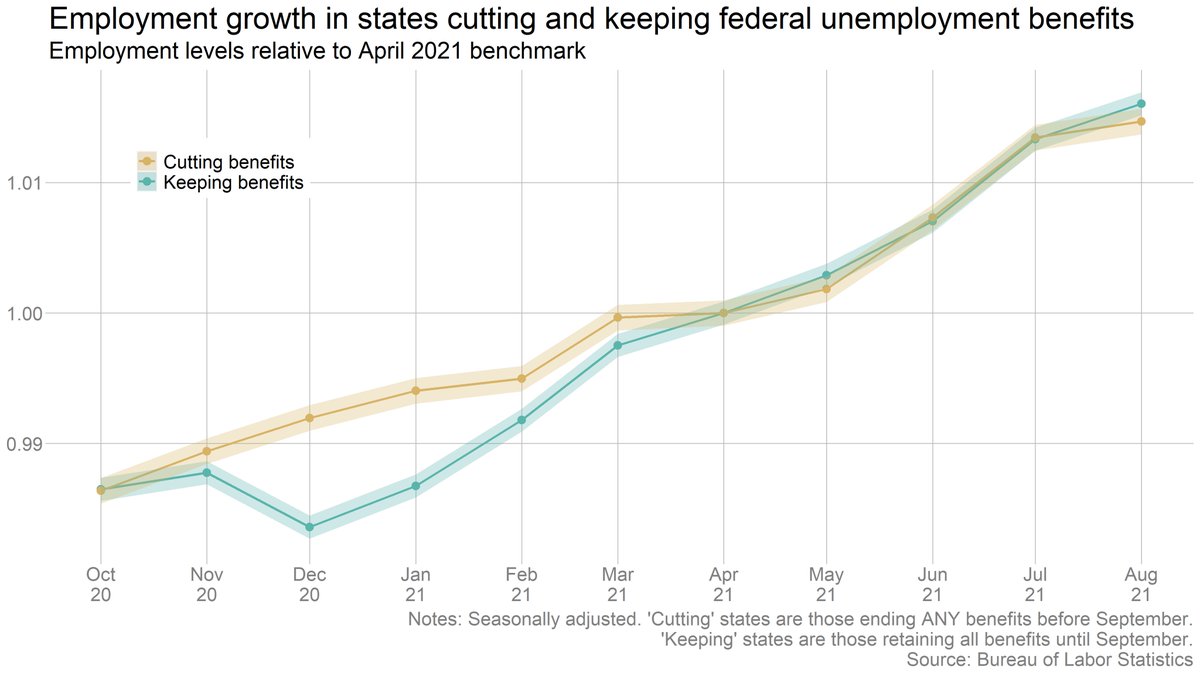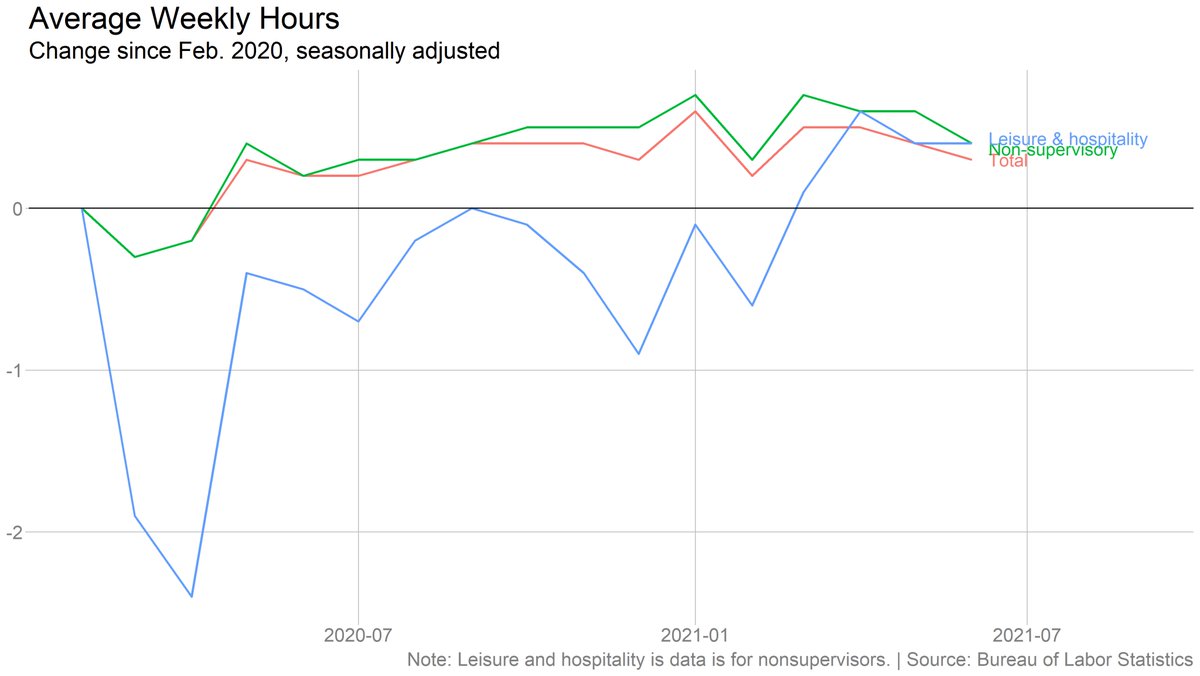
There were 10.4 million job openings at the end of August -- down from July, but still near a record high. #JOLTS 

Hiring also fell, and unlike openings has been slow to rebound over all -- only modestly above prepandemic levels. 

The number of unemployed workers per job opening ticked up ever so slightly in August, but there are still more jobs than available workers.
(Note: This chart adjusts for workers misclassified as "employed.")
(Note: This chart adjusts for workers misclassified as "employed.")

A record 4.3 million people voluntarily quit their jobs in August, a sign that workers believe they have leverage amid talk of a labor shortage. 

Quits are especially elevated in leisure and hospitality, where wages are rising quickly and businesses are struggling to hire. But quits are elevated across a range of industries. 

Hires and openings both dropped sharply in leisure and hospitality in August, however. (Although openings are still very high.) Consistent with the Delta-driven slowdown we've seen in other data. 

One measure of hiring difficulty is the ratio of hires to openings. The base level varies by industry, so have to compare to pre-Covid level. Shows hiring has become harder across industries, but especially in services and retail. 

Note that the relationship between hires and openings has changed over time -- it takes more openings to produce one hire than it used to. (Perhaps due to ease of online job postings?) But the ratio has plummeted during Covid. 

• • •
Missing some Tweet in this thread? You can try to
force a refresh















